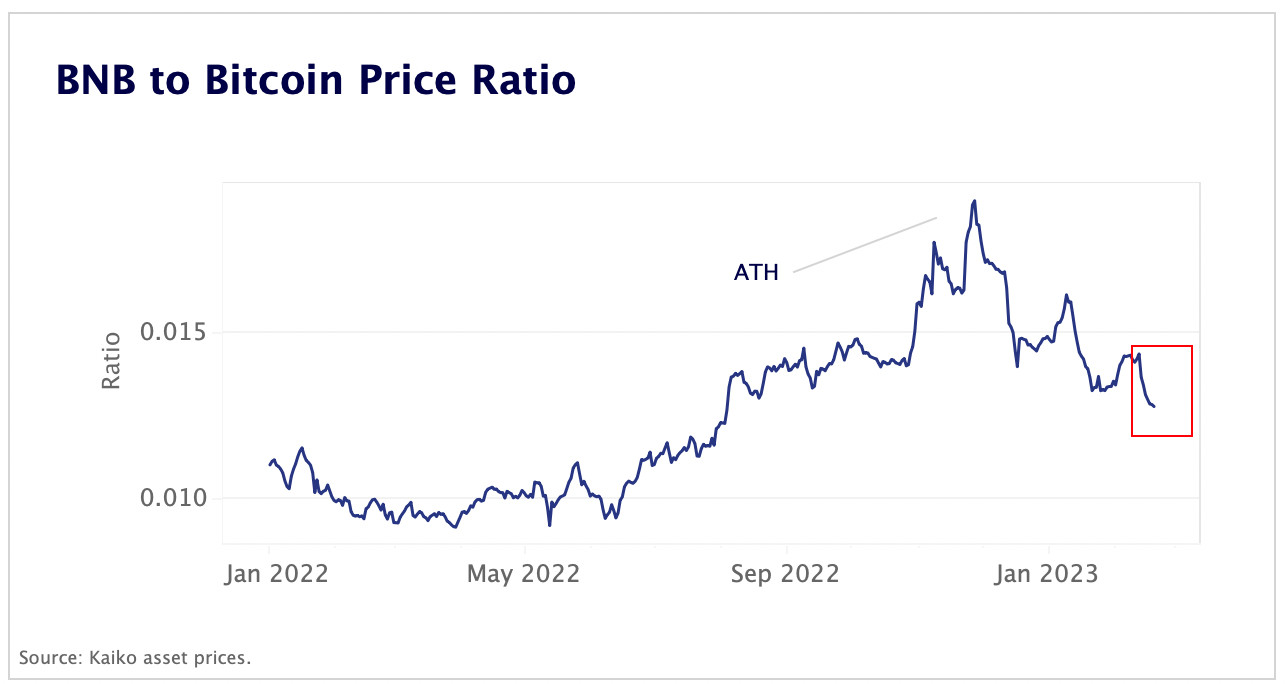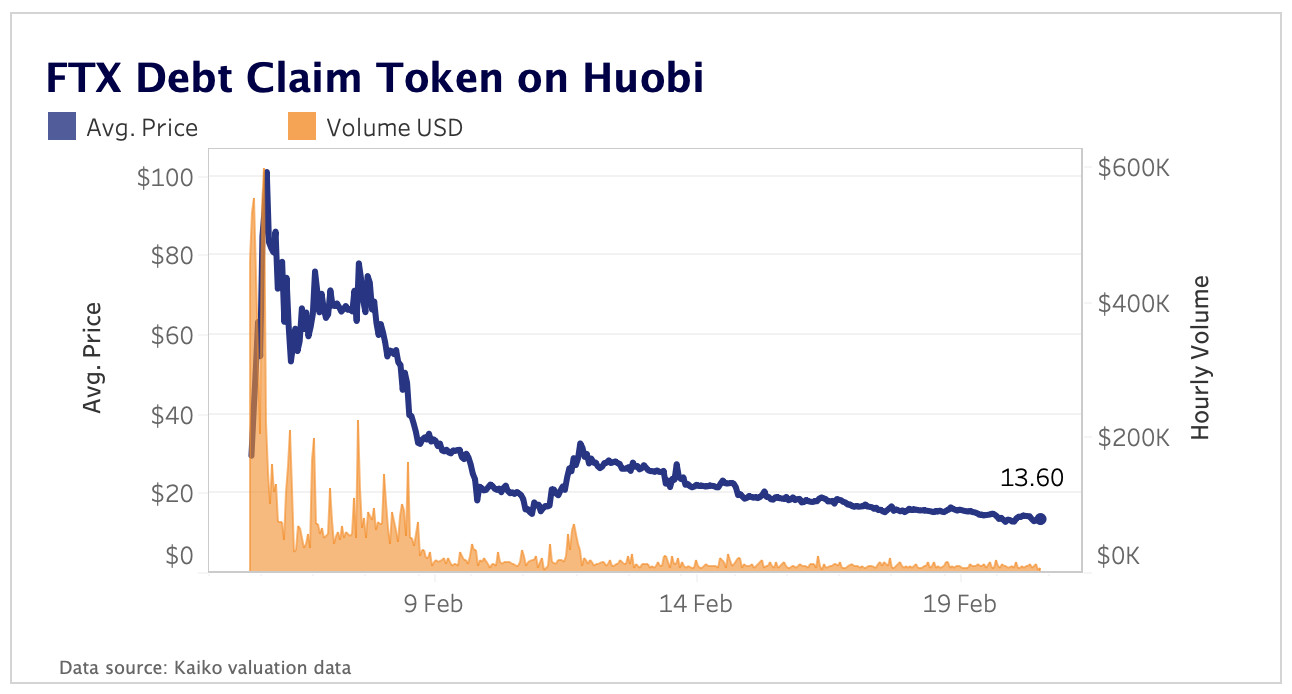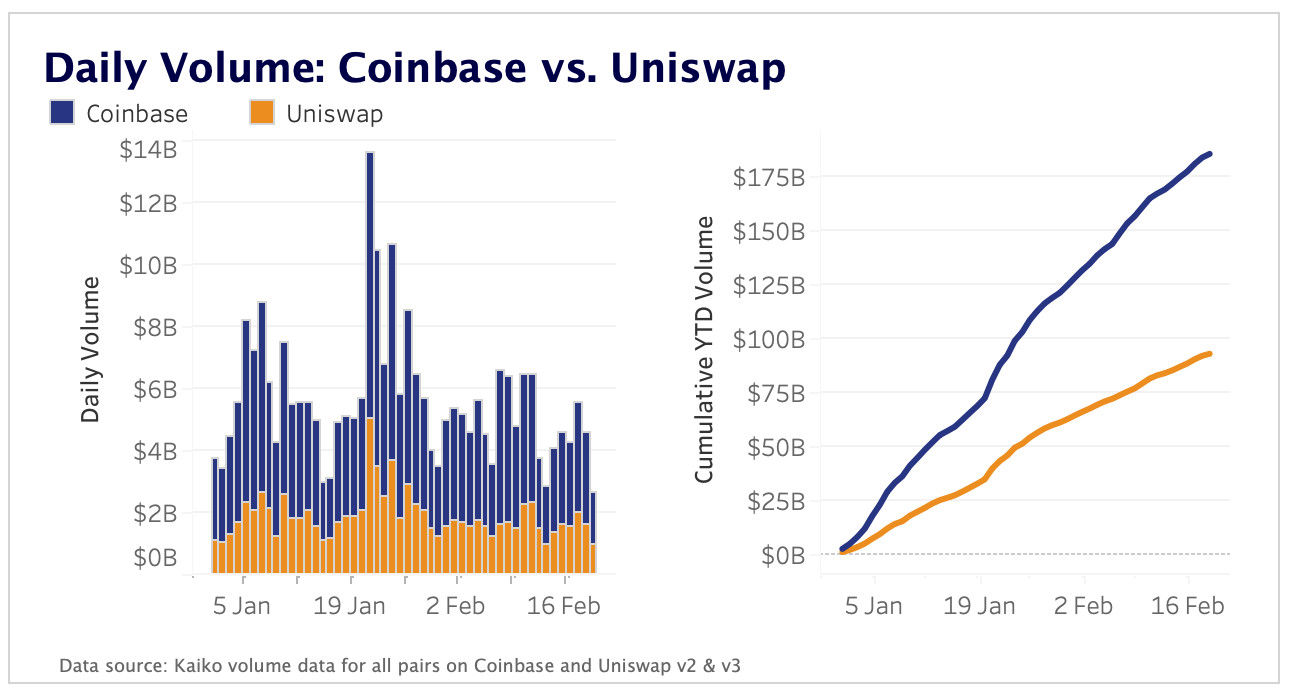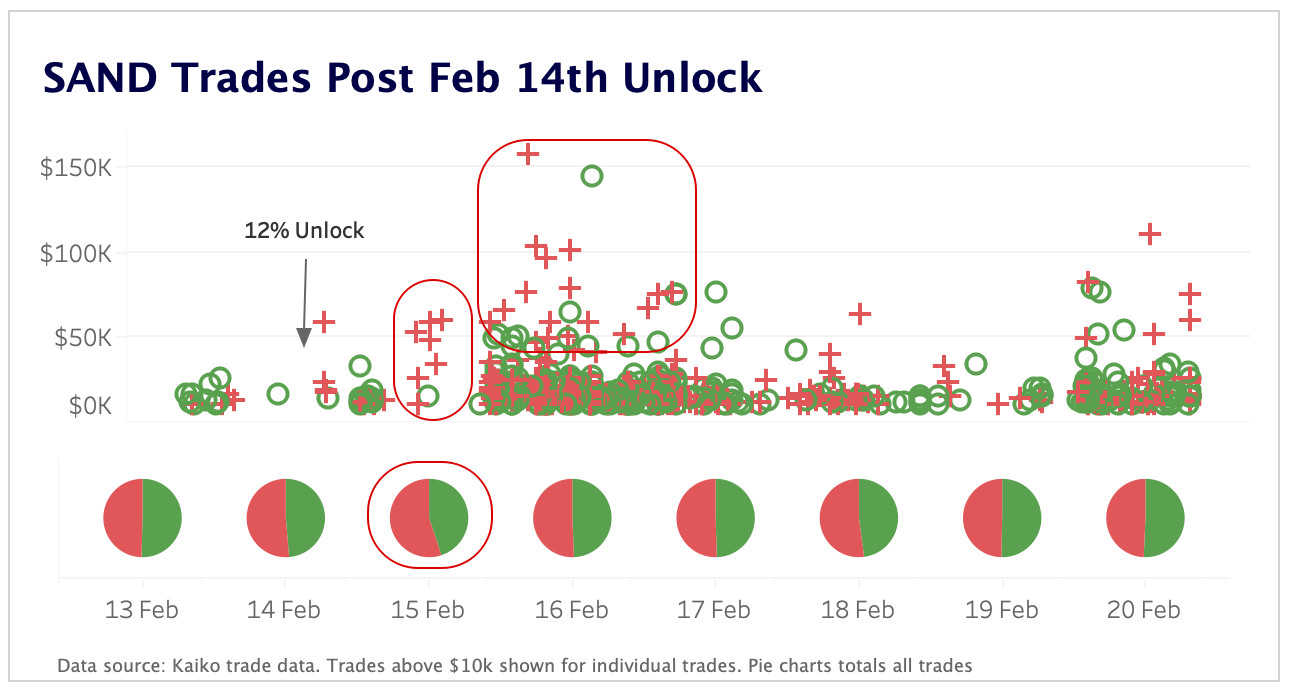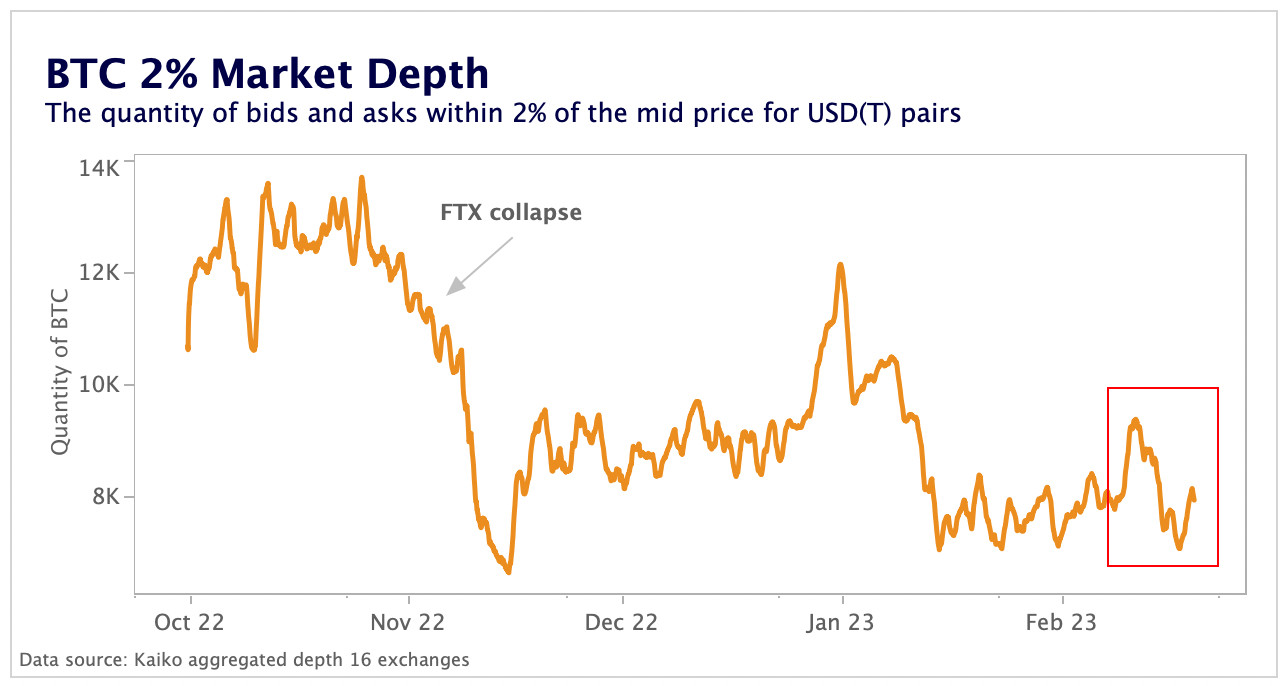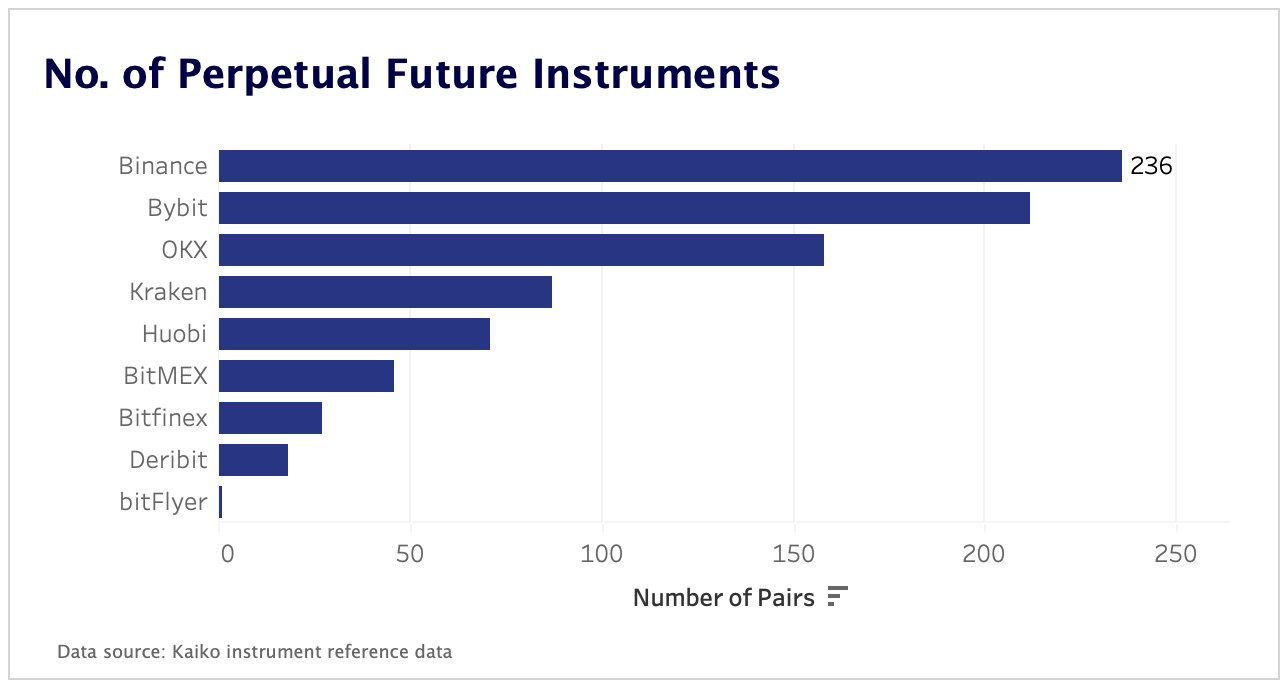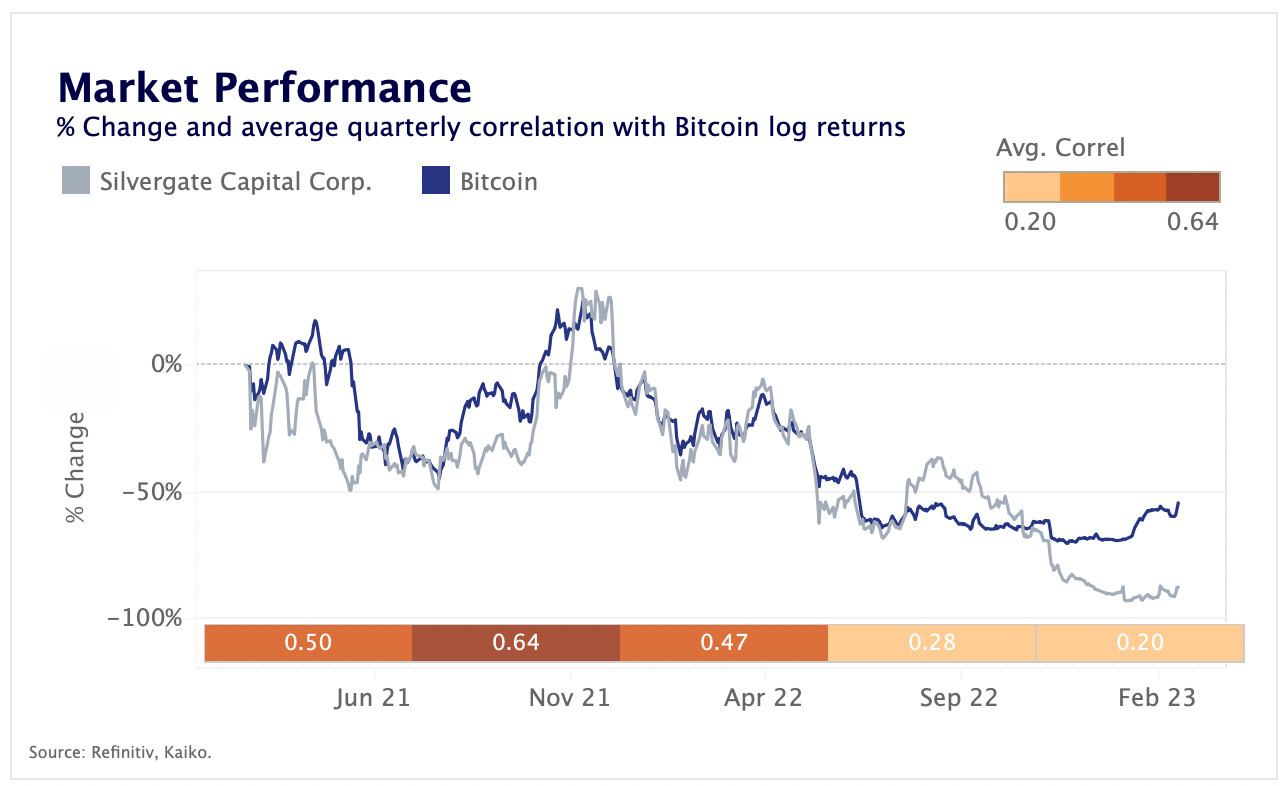A summarizing review of what has been happening at the crypto markets of the past week. A look at trending sectors, liquidity, volatility, spreads and more. The weekly report in cooperation with market data provider Kaiko.
The last 7 days at the cryptocurrency markets:
- Price Movements: Huobi listed a token representing a claim on FTX's debt, which briefly surged to as high as $100 before crashing to $13.
- Market Liquidity: Coinbase trade volume is increasingly outpacing Uniswap's, suggesting traders still prefer CEXs.
- Derivatives: BTC open interest remains flat despite heavy volatility.
- Macro Trends: Silvergate, once the crypto industry's preferred banking partner, has seen a collapse of its share price amid the FTX fallout.
Markets brace for regulatory impact
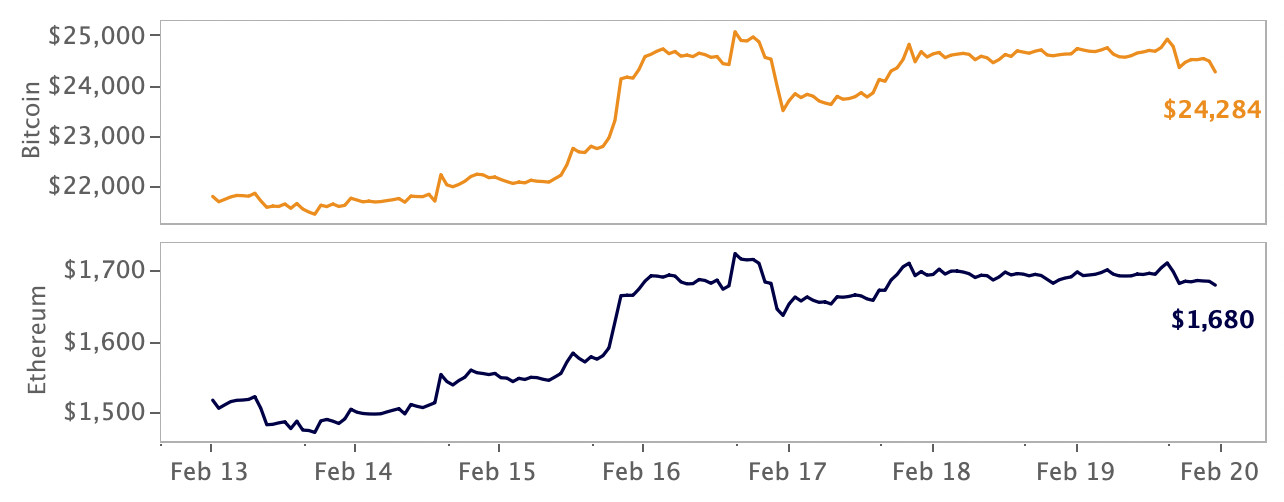
Crypto markets continued to soar despite another week packed with regulatory punches. Last Thursday, the SEC formally charged Terra founder Do Kwon, alleging a “multi-billion dollar fraud” against investors in the UST stablecoin and LUNA. The SEC also proposed new custody rules that would make it harder for investment firms to work with crypto companies. On a brighter note, Layer 2 networks Polygon and zkSync each announced a launch date for their competing zero-knowledge solutions.
Binance's BNB underperforms in February
Binance’s BNB token has underperformed the broad market in February as the Paxos-BUSD situation continues to weigh on the exchange, which experienced massive outflows last week. The BNB to BTC price ratio, which measures the relative performance of the two tokens, fell to its lowest level since August 2022. BNB holders benefit from lower transaction fees, can vote on new coin listings, and earn passive staking rewards, but the token can also be interpreted as a proxy of the exchange’s performance. BNB had mostly outperformed Bitcoin (BTC) until November 2022, when the ratio started trending downwards as sentiment deteriorated following the collapse of FTX.
Huobi lists token representing claim on FTX debt
On February 6, Huobi listed a FUD token, designed to represent a claim on the debt of FTX. The debt is supposedly held by a DAO, and Justin Sun has tweeted his attestation of the debt and hinted it is in the tens of millions. The DAO released 20mn tokens at a discount of $1 per token, while Huobi claimed fair value was between $1 and $5, hinting at between $20mn-$100mn in debt. If the debt is greater than $20mn, the DAO will airdrop the remaining FUD to holders. Market speculation on this amount seems to have taken over as FUD is now trading at $13, down from as high as $100 dollars on listing. It’s not clear why the token is trading so high, particularly after guidance from Huobi on the fair value of the token. The listing has come under fire from investors for closely resembling a security, as well as the fact the DAO has yet to offer any proof that they hold any claim to FTX debt.
Coinbase trade volume increasingly outpacing Uniswap's
In the aftermath of FTX's collapse, a prominent narrative emerged that retail investors would migrate towards decentralized exchanges, especially amid growing regulatory uncertainty. Yet, Coinbase, who many feared might be next in line for a SEC crackdown, has had persistently higher volumes than Uniswap this month and since the start of the year. Cumulative volumes so far this year for Coinbase have reached over $185bn, compared to just over $93bn for Uniswap.
Last year we reported on Uniswap trade volumes consistently equalling Coinbase's. That trend appears to have been temporary, with Coinbase reaffirming its position as a top exchange in trading volume. The Coinbase/Uniswap indicator seems to be one of the best metrics for tracking trader preferences, and it will be interesting to keep an eye on it amid the latest round of centralized exchange fears.
SAND token endures sell pressure after unlock
In a recent Deep Dive we took a look at investor behavior around token unlocks and in our examples we found that the higher the percentage allocation towards early investors, the more sell pressure the token endures. We used SAND’s unlock last August as an example, and the recent unlock on February 14 appears to have been no different.
As was the case in August, 12% of the total supply of SAND was unlocked last week, with about 50% of that allocation going to investors - a relatively high amount compared to other unlocks. In the day or two following the unlock we observed several large sell orders of SAND for its most liquid USDT pairs: On February 15 55% of those orders were sells, equating to an extra $7mn of sell pressure on the USDT pair alone. However, in terms of price action, SAND moved largely in line with Ethereum (ETH) after the unlock, and has gone on to outperform by a staggering 18% in the last 24 hours.
The Alameda Gap persists
The liquidity gap left by the collapse of FTX and Alameda, which we dubbed the "Alameda Gap," has persisted into February, with BTC market depth still well below its November levels. The quantity of BTC-USD(T) bids and asks within 2% of the mid-price aggregated on 16 exchanges hovered around 8k BTC in February. This is over 40% less than in October, when market depth exceeded 13K. BTC liquidity fell the most on smaller exchanges, with Gemini and Kraken registering a decline of over 60%.
Heightened volatility likely kept market makers on edge with market depth dropping by over 2k BTC in February despite edging up slightly last week. The drop was driven by Binance's USDT markets which declined nearly 50% between Feb 11-17.
Binance offers most perpetual futures with Bybit not far behind.
A useful gauge of market leaders in the perpetual futures space can be the number of pairs each exchange offers. Prior to FTX’s collapse, FTX had the most pairs listed of any exchange and was one of the market leaders for perpetual futures contracts due to the number of contracts it offered. Post-FTX, Binance leads the way with 236 different perpetual futures pairs listed, with Bybit and OKX not far behind. Interestingly, BitMEX ranks poorly in terms of number of perps despite pivoting late last year to a “derivatives-focused strategy” after a round of layoffs.
Bitcoin's correlation with equities hits 4-month low
Crypto has been decoupling from traditional assets in 2023 as macro headwinds subside and crypto-specific events increasingly drive the market. BTC's negative correlation with the U.S. Dollar has seen the sharpest shift towards positive territory, and currently hovers around -0.1, its weakest negative level since August 2022. The greenback has gained some support as U.S. economic data remains robust with the Atlanta Fed expecting U.S. growth of 2.4% in the first quarter.
While BTC exhibited strong volatility in February, it largely outperformed traditional assets as global liquidity improved. BTC's correlation with the Nasdaq 100 has also weakened, falling below 0.4 for the first time since the FTX crash. Its correlation with U.S. investment-grade bonds currently hovers around zero.
Silvergate share price de-correlates from crypto market
Silvergate made a name for itself as the bank of choice for some of the largest crypto companies, most notably working with FTX, which accounted for around 10% of crypto-linked deposits. Due to its large crypto exposure, Silvergate’s share price moved in line with BTC returns for most of 2021-22. However, its correlation has weakened significantly in 2023 due to growing legal and regulatory risks around the bank's dealings with FTX and Alameda.
The bank lost nearly 70% of its value since November and has been heavily shorted. In early January Silvergate revealed it sold assets at a loss to cover massive withdrawals of digital-assets deposits of over $8bn in the last quarter of 2022. Last week, its share price surged to its highest levels since December 2022 after Citadel Securities joined the list of other major investors disclosing a share in the company.
Overall, crypto-linked banks in the U.S. face a tightening regulatory environment which could lead to a reappraisal of the industry with smaller projects and offshore unregulated exchanges deemed too risky. In early February, another major crypto-friendly bank, Signature, cut its ties with Binance which has since suspended USD bank transfers.


